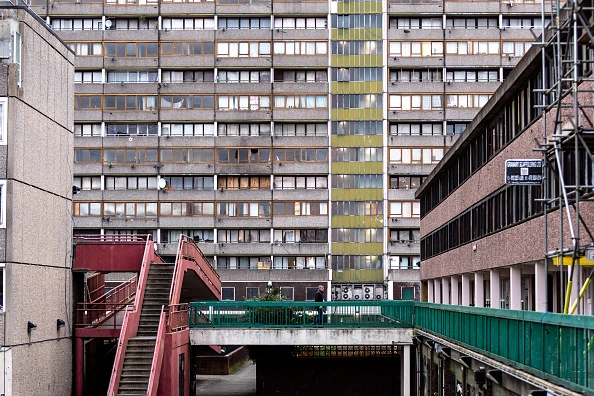
In a world grappling with increasing wealth inequality, the global housing crisis is taking centre stage, according to a recent report mapping the division between high and low-cost housing. The study conducted by MoverDB.com sheds light on the growing disparity in affordable housing and the urgent need for solutions.

The report also highlights the significant impact of rapid urbanisation and wealth accumulation on housing markets worldwide. As cities experienced booming growth in the 20th century, the surge in population, industries, and wealth drove up property prices, particularly in capital cities, leaving low-income residents with limited options. The resurgence of gentrification, coupled with the failure of low-wage service jobs to recover after the pandemic, has further exacerbated the issue.
Low-cost housing shortage
Housing, once seen primarily as a basic necessity, has transformed into an investment opportunity for the wealthy. This trend has fuelled the proliferation of luxury homes while deepening the shortage of affordable housing in major global cities. The report emphasises that housing is now viewed as a pension and investment asset, perpetuating the housing crisis.
To provide a comprehensive overview of the global affordable housing crisis, MoverDB.com analysed price trends and divided housing into low-cost and high-cost categories in capital cities worldwide. The study found striking variations in the distribution of affordable and expensive housing.
Among the key findings, Budapest, the capital of Hungary, claimed the highest percentage of high-cost housing, with 63.72% of properties priced at more than double the city's median home value. London ranked fifth in Europe for high-cost housing concentration, with 27.93% falling into this category. On the other end of the spectrum, Brasilia, the capital of Brazil, exhibited the highest proportion of low-cost housing, accounting for 50.13% of the available market. Nicosia, the capital of Cyprus, reported the lowest percentage of low-cost housing at just 0.35%, alongside the fourth-highest proportion of high-cost housing at 42.64%.
A closer look and the high/low-cost divide
Brazil's housing deficit affects 28.5 million people, yet the capital city, Brasilia, offers a glimmer of hope with its significant presence of low-cost housing. In Europe, Athens stands out as a leader in providing affordable options, with 31.87% of homes on the market listed below half the city's median value. Luxembourg follows closely behind, with 18.5% of properties falling into the low-cost category.
The report underlines the urgent need for action to address the housing crisis, both in developing countries experiencing rapid urbanization and in wealthier capitals. It cites forecasts indicating that 75% of the global population will reside in urban areas by 2050. Currently, around 850 million people live in slums and informal urban settlements, with some megacities in low and middle-income countries housing almost 80% of their populations in such conditions.
London's case exemplifies the housing challenges faced by major global markets. The city ranks ninth globally for low-cost housing availability, with a mere 2.98% falling into this category. The borough of Tower Hamlets paints a stark picture of inequality, with over 20,000 families on the waiting list for social housing and a child poverty rate of 43%, according to the report, despite being home to the prosperous financial district of Canary Wharf.
[Read more: Moving cities in the US could see renters get a 500% apartment space increase]






